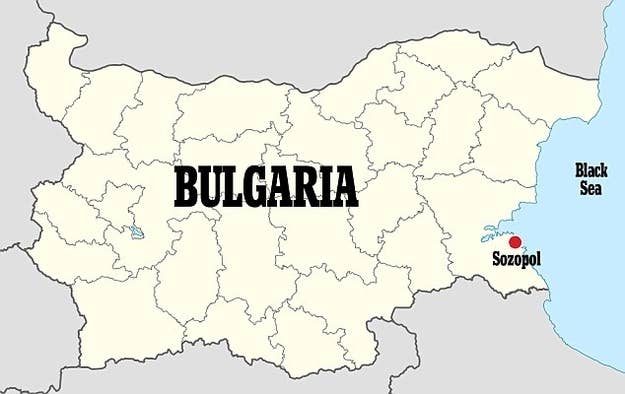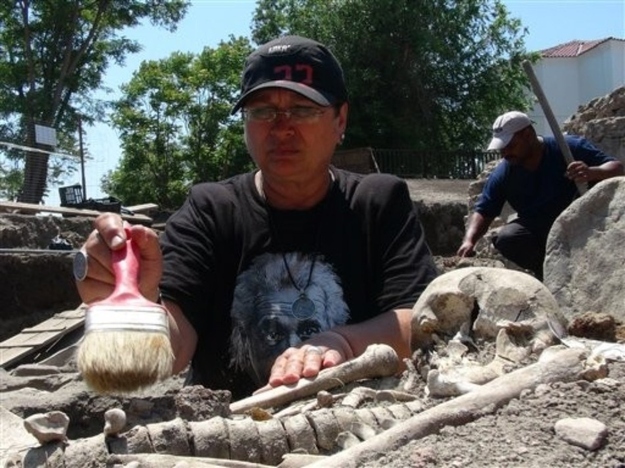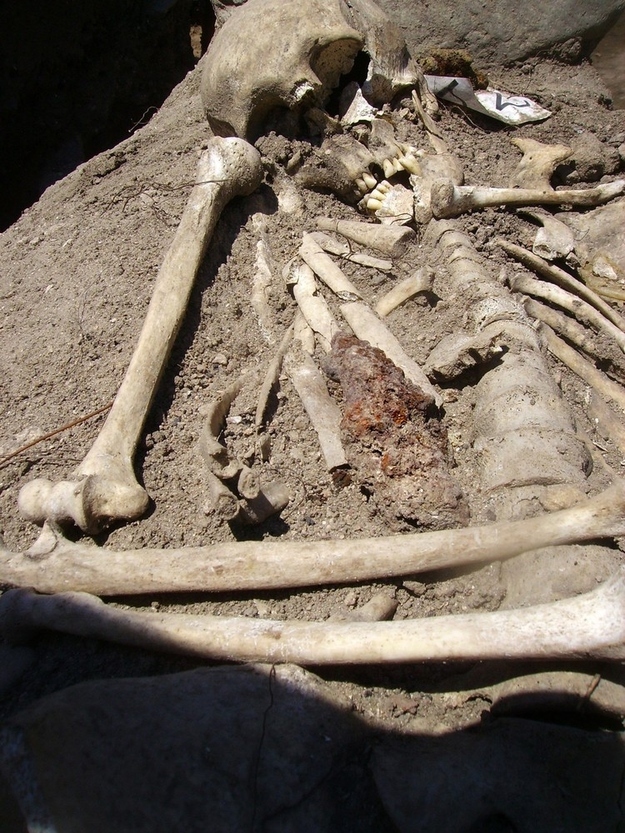





Oh good, something to distract from the unending supply of zombie stories. It shouldn't be surprising that a church in the heartland of vampire origin myths would turn up questionable remains.

The two medieval "vampire" skeletons were unearthed at a monastery in Sozopol, Bulgaria and are approximately 800 years old according to archaeologists.

Bulgaria is located on the western side of the Black Sea in south eastern Europe, situated between Romania (home of Transylvania) to the north, Greece and Istanbul to the south and Serbia and Macedonia to the west.

The skeletons are pierced through the chest with iron rods to keep them from turning into vampires, according to the head of the history museum. Local custom at the time believed people who were considered bad during their lifetimes might turn into vampires after death unless stabbed in the chest with an iron or wooden rod before being buried.

Taken on Sunday, June 3, 2012 this photo shows archeologist Kalina Kostadincheva as she cleans dust from a skeleton dated back in the Middle Ages.

Bozhidar Dimitrov, chief of the National History Museum in Sofia told reporters the find adds to the already numerous (over 100) skeletons found throughout Europe with similar vampire preventative measure taken.

The practice seems to coincide with European plagues. Sometimes when mass graves would be reopened to add new bodies, previous corpses would be bloated with gas and appear to have longer teeth, hair and nails. Without modern science to explain the process of decomposition, the most logical explanation was that the corpses were not as dead as they appeared.